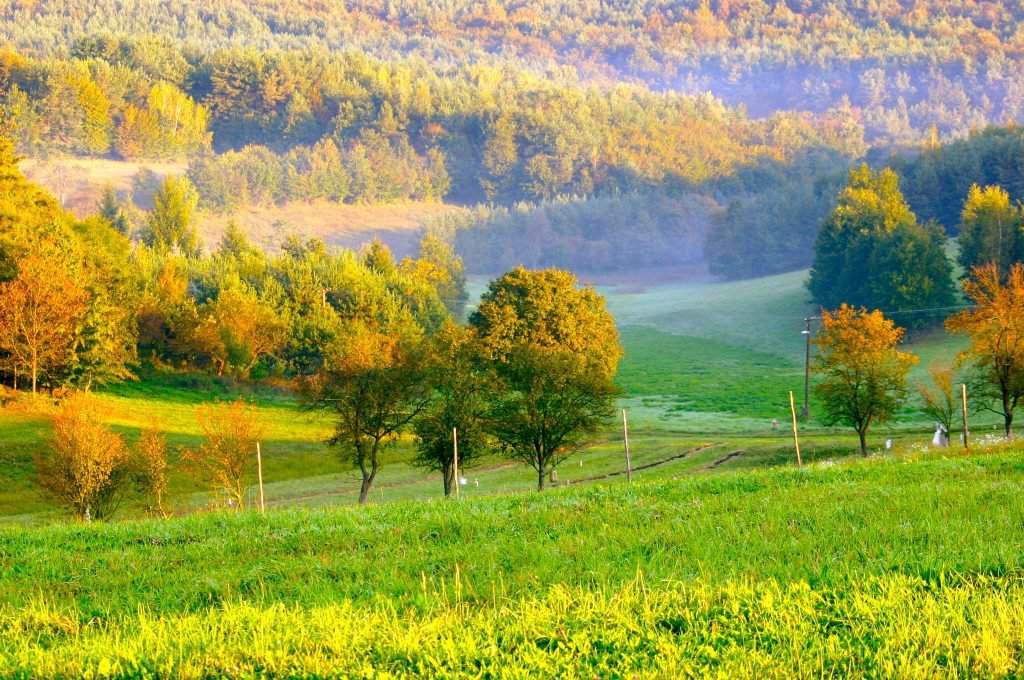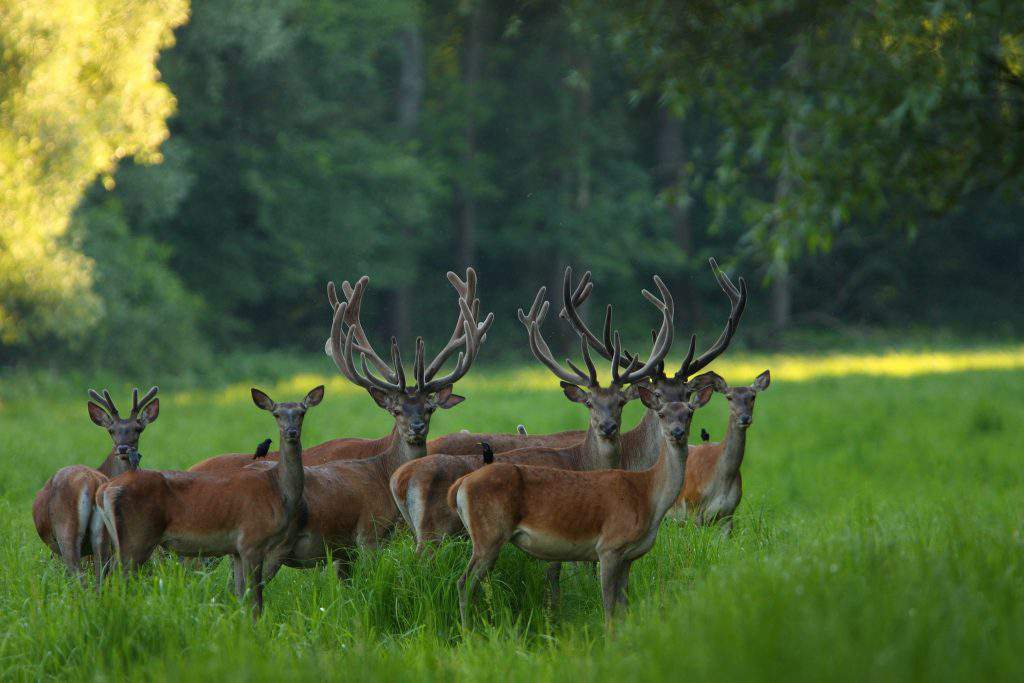The most beautiful hiking destinations in Hungary

In autumn, the leaves of the trees colour the landscape all over Hungary. To experience this beautiful phenomenon, sokszinuvidek.24.hu collected some of the most magical hiking, excursion destinations in Hungary.
Arboretum of Zirc
The landscape-garden style park found in the monumental environment of the Cistercian Abbey is the highest sited (400 metres above sea level) arboreal collection in the country. It is a protected natural area since 1951.
The arboretum is home to almost six hundred tree and bush species. Half of the species is wide-spread the Bakony, while 40% is known from the Cuha Valley. Hungary’s oldest white pines are found among the seventy coniferous species.

You’re welcomed by a lovely fishpond at the entrance, which is nurtured by the water of the Cuha stream. The park is mostly inhabited by squirrels, but you might be able to also spot roe-deer among the trees.
Őrség
The Őrség is a historical and ethnographical region mostly belonging to West Hungary, and partly to Slovenia. It is very rich in sights, natural treasures, and historical, cultural and sacral monuments.
The name of the region (őrség=guard) comes from the time of the Hungarian conquest of the Carpathian Basin, when the chiefs commanded guards to watch out for the western border.
It was a respected job as they belonged to the authority of the king.

The region is characterised by alder woods along the streams and unique plants like ostrich ferns, globeflowers, different moss species, sundew, Marsh cinquefoil, bog-bean and other protected species.
Arboretum of Szarvas
The arboretum found at one of the backwaters of Hármas-Körös is one of Hungary’s biggest and most significant live arboreal collection, which is the home of centenary taxodiums and sequoias. Five different arboreal collections can be visited on 65 hectares.
Besides the world-famous dendrologic collection, herbs, fungi and other zoological values can be found in the arboretum. You can tour the paths alone or take part in guided tours.

In case of bad weather, it is recommended to visit the Magical Farm of Count Pepi, the greenhouse or the escape room found in the Garden of Secrets.
Dobogókő
Dobogókő is found in the heart of the Danube Bend, 25 kilometres from Budapest. It was named after the highest point of the Visegrád Mountains and the Danube Bend, Dobogó Rock (699m).
It is a climatotherapeutic destination, a hiking and skiing centre and a pilgrimage site perfect for meditation and rejuvenation.
Not to mention that the lookout towers of the region offer a beautiful view of natural wonders.

Moreover, it is the starting point of several hiking routes as the following are found in its vicinity: the Rám Cleft, the Thirring Rock, the Zsivány Rocks, the Ferenczy Rock and the Vadálló Rocks.
Forest of Gemenc
The unique beauty of the forest lies in the closeness of water, the peculiar flora and fauna and the world of wetlands.
Gemenc is one of Hungary’s most famous protected areas, Europe’s biggest floodplain forest and an internationally acknowledged, prominent natural value. The dominant power of the area is the Danube.

The world record holder red deer stock, wold boars and roe-deer are regular visitors, but you can also see wildcats, badgers, foxes, martens, squirrels, otters and beavers. Furthermore, the forest is characterised by an outstanding bird stock, as well.
Szalajka Valley
It is a beloved hiking destination at the feet of the Bükk Mountains, found 160 kilometres from Budapest.
The valley was named after the burning of potash called sal alkali (szalalkáli), which was the main source of income in the region in the 19th century.
The valley is home to natural curiosities, like the Fátyol Waterfall, the Szalajka Spring, the Cave of Istállós-kő, the Forest Museum and the Forest Train of Szilvásvárad.

The springs of the Szalajka Stream are typical karst springs. For that matter, the water springs from a limestone cave. Out of the romantic flora of the valley, the hornbeam oakwoods and the beech woods are definitely worth highlighting. And if you get tired during the excursion, you can rest is the shadow of the pedunculated and turkey oaks.
National Botanical Garden of Vácrátót
Hungary’s biggest botanical garden, thus the widest flora collection is found in Vácrátót. Almost 13 thousand species are presented in the 27 hectare big garden. The collection of woody plants is especially rich.

Moreover, you can learn about the tropical world of plain rainforests, desserts and mountain rainforests in the greenhouses.
Castle of Drégely
The historic castle stands on a 444 metre big volcanic rock among the verdure mountains of the Börzsöny.
The castle is part of the National Castle Programme, its renovation will start soon.

It is a real touristic destination, which is visited by thousands of people every year. It is found in a beautiful environment: the verdure forests turn golden in the autumn months.
Lillafüred
The neighbourhood is full of hiking opportunities, but it is also a great destination for those who’d prefer to relax. Once you’re there, it’s advised to walk through the hanging garden which leads you to the palace hotel.

The Anna calc-tuff cave, which is a must-see sight for the lovers of nature, is found along the promenade. But Lillafüred is also the starting point of the forest train that was inaugurated in 1920 and that is a great experience for both adults and children.
Pilis Mountains
The mountain range lies between Budapest and Esztergom, on the right coast of the Danube. Even though it doesn’t have high peaks, people love it for its natural wonders.

It was named after its highest point, the Pilis (756 m), which originally meant “bare mountaintop” and is related to the old meaning of pilis, tonsure.
Featured image: MTI
Source: http://sokszinuvidek.24.hu/





